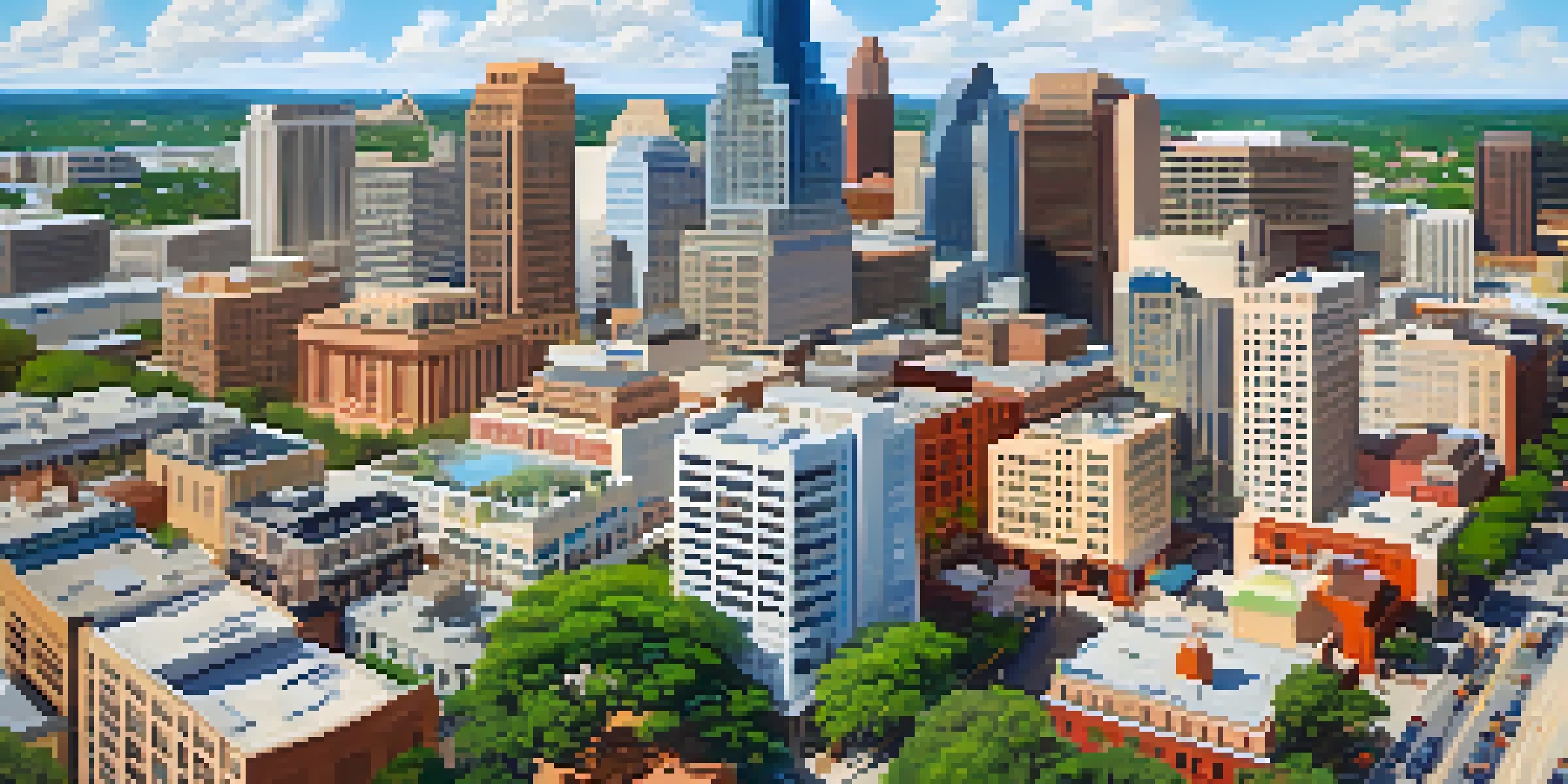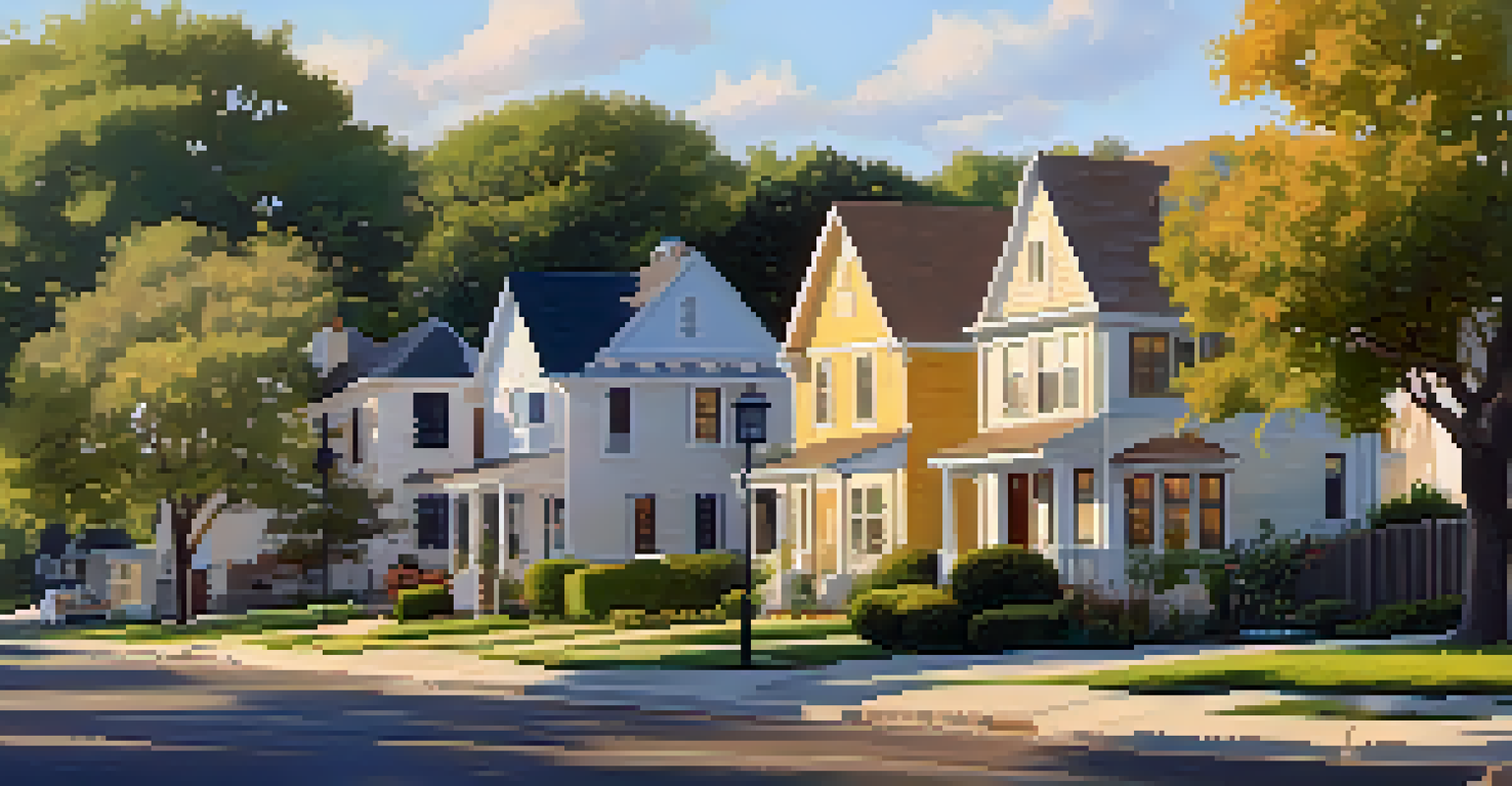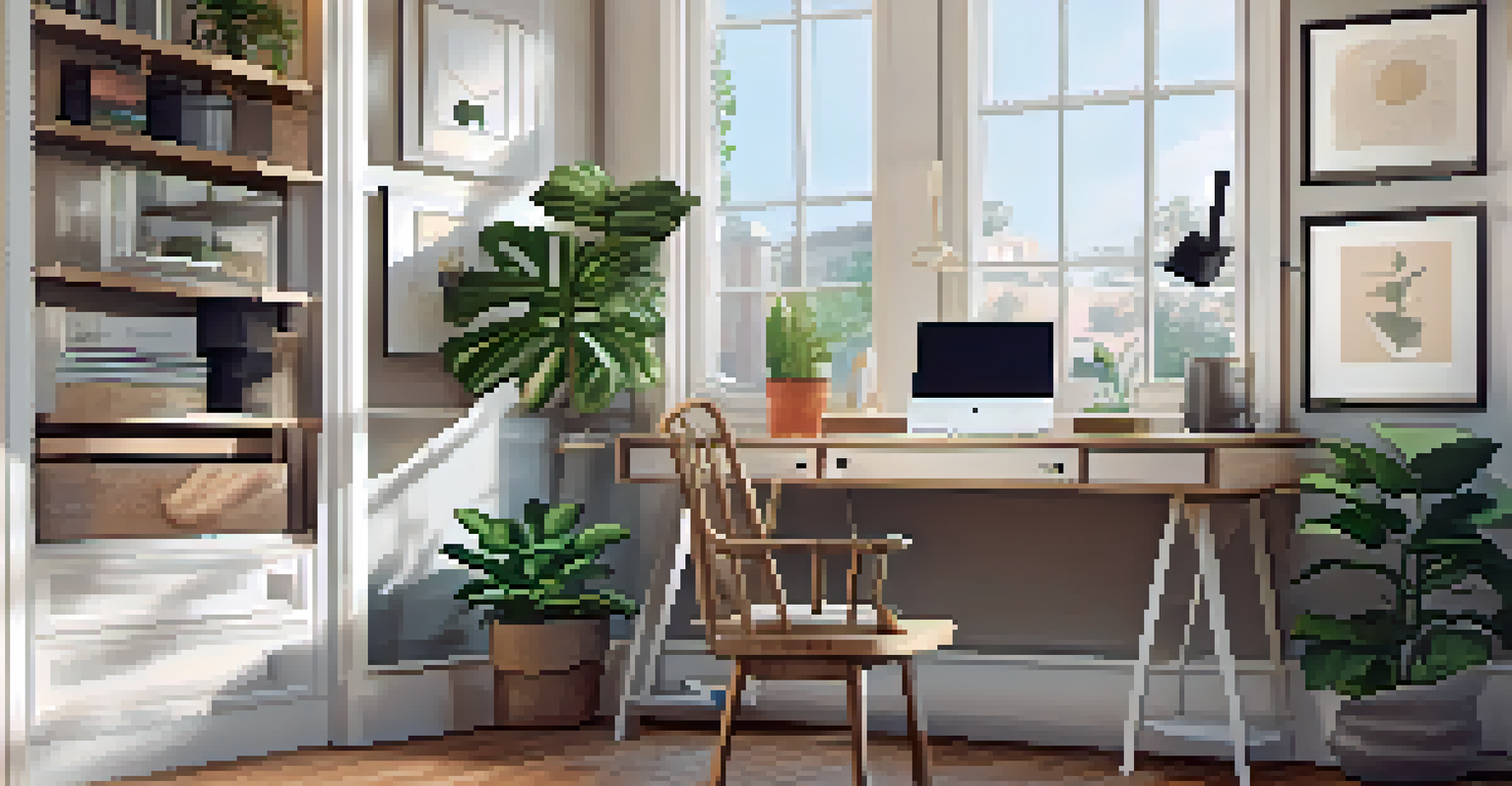The Changing Face of Homeownership in Austin: A Study

Austin's Real Estate Boom: A Double-Edged Sword
Austin has become a hotspot for tech companies and young professionals, leading to a dramatic increase in home prices. With demand soaring, many find themselves priced out of the market, creating a challenging environment for potential buyers. This boom, while beneficial for some, has sparked discussions about housing affordability and access.
The housing market is a double-edged sword; it can create opportunities for some while leaving others behind.
As more people flock to the city, the existing housing stock struggles to keep up with the influx. This imbalance has resulted in a competitive market where bidding wars are common, pushing prices even higher. The dream of homeownership, once a given for many residents, is becoming a distant reality for some.
The situation has prompted local leaders to explore solutions, such as affordable housing initiatives and zoning reforms. However, these measures often face opposition from existing homeowners who fear a decrease in property values. Thus, the growth of Austin's real estate market presents both opportunities and challenges that need careful navigation.
Demographics Shifting: Who is Buying Homes in Austin?
The demographic landscape of homebuyers in Austin is changing dramatically. Millennials and Gen Z are now the primary homebuyers, driven by remote work opportunities and a desire for more space. This shift is reshaping the types of homes that are in demand, as younger buyers often prioritize features like outdoor spaces and home offices.

Interestingly, many of these younger buyers are opting for smaller, more affordable properties rather than the traditional single-family homes. This trend has led to a rise in demand for townhouses, condos, and even co-living spaces. As they navigate the market, these buyers often value community and lifestyle over size and luxury.
Austin's Housing Crisis Deepens
The rapid rise in home prices has made housing increasingly unaffordable for many residents, prompting urgent discussions about access and affordability.
This shift also influences local developers, who are adjusting their projects to cater to the evolving needs of potential homeowners. By incorporating sustainable features and community amenities, they aim to attract this new wave of buyers. Understanding these demographic changes is crucial for anyone looking to succeed in the Austin real estate market.
Rising Interest Rates: Impact on Homebuying Decisions
In recent years, rising interest rates have added another layer of complexity to the homebuying process in Austin. Higher rates often translate to increased monthly payments, making homes even less affordable. First-time buyers, in particular, feel the pinch as they try to balance their budgets with the reality of escalating costs.
Affordable housing is not just a need; it is a right that fosters community and stability.
As a response to these rising rates, many prospective homeowners are reconsidering their purchasing strategies. Some may choose to delay their homebuying plans, while others might look for less expensive neighborhoods or smaller properties. This cautious approach reflects a growing awareness of the long-term financial implications of homeownership.
Despite these challenges, many buyers remain optimistic about investing in Austin’s housing market. They recognize its long-term growth potential and the city's vibrant culture. However, navigating these financial hurdles requires careful planning and a clear understanding of their own financial situations.
The Role of Technology in Modern Homebuying
Technology is revolutionizing the homebuying experience in Austin, making it more accessible and efficient. From virtual tours to online mortgage applications, tech tools streamline processes that once involved multiple in-person meetings. This shift not only saves time but also expands options for buyers who may not be local.
Real estate platforms and apps have become invaluable resources for buyers, offering real-time market data and insights. With just a few clicks, prospective homeowners can access listings, neighborhood statistics, and even reviews of local schools. This wealth of information empowers buyers to make informed decisions.
Young Buyers Shift Market Demands
Millennials and Gen Z are driving demand for smaller, more affordable homes with features like outdoor spaces and home offices, reshaping the local real estate landscape.
Moreover, technology has fostered a greater sense of community among homebuyers. Online forums and social media groups allow individuals to share experiences and advice, creating a support system. As technology continues to evolve, its role in shaping homeownership trends in Austin will likely grow even more significant.
Housing Affordability Crisis: Challenges Ahead
The issue of housing affordability in Austin has reached a crisis point, raising concerns for current and future residents. With home prices continuously climbing, many families find themselves unable to afford suitable housing. This crisis is prompting discussions about the social implications of such disparities in wealth and opportunity.
Local leaders are increasingly focusing on affordable housing initiatives to combat this crisis. These efforts include mixed-income developments and assistance programs aimed at helping lower-income families achieve homeownership. However, achieving a balance between development and affordability remains a complex challenge.
Community engagement is essential in addressing these issues. By involving residents in the planning process, local governments can better understand the needs and desires of their constituents. Only through collaborative efforts can Austin hope to create a housing market that is inclusive and accessible to all.
The Influence of Remote Work on Housing Preferences
The rise of remote work has significantly influenced homeownership trends in Austin. As more companies adopt flexible work policies, buyers are seeking homes that accommodate their new lifestyles. This means larger spaces for home offices or homes located in quieter neighborhoods, away from bustling city centers.
This shift has also led to an increased interest in suburban areas surrounding Austin. Many buyers find that they can afford larger homes with more amenities if they venture slightly outside the city. This trend is reshaping the real estate landscape, with suburban developments gaining popularity.
Remote Work Changes Housing Trends
The rise of remote work is leading buyers to seek larger homes in quieter suburban areas, significantly influencing the direction of Austin's real estate market.
However, this change raises questions about urban planning and infrastructure. As people flock to suburban areas, local governments must ensure that infrastructure keeps pace with this growth. Balancing the needs of both urban and suburban residents will be crucial in shaping Austin's future housing landscape.
Future Trends: What Lies Ahead for Austin Homeownership?
Looking ahead, the future of homeownership in Austin is likely to be shaped by ongoing economic and social changes. With the city's population projected to continue growing, demand for housing will remain high. However, the need for affordable and sustainable options will become increasingly critical.
Innovative housing solutions, such as co-housing and sustainable developments, may gain traction as communities seek to address affordability issues. These models not only provide housing but also foster a sense of community, which is becoming increasingly important for many buyers. This trend reflects a broader shift in societal values towards collaboration and sustainability.

Ultimately, the path forward will require collaboration among developers, local governments, and community members. By working together, stakeholders can create a housing market that is equitable and resilient. The changing face of homeownership in Austin is not just about houses; it's about building a community where everyone has a place to call home.